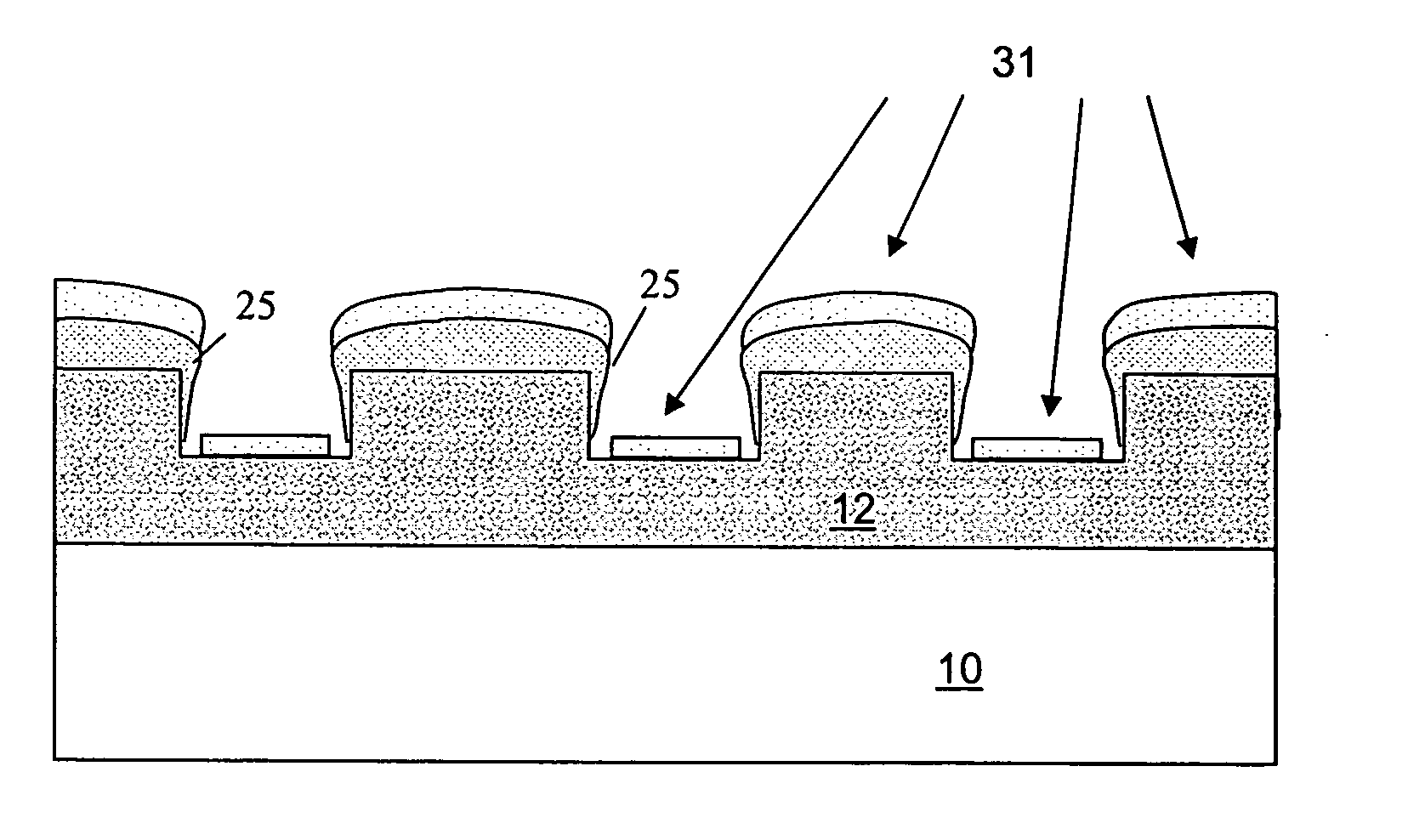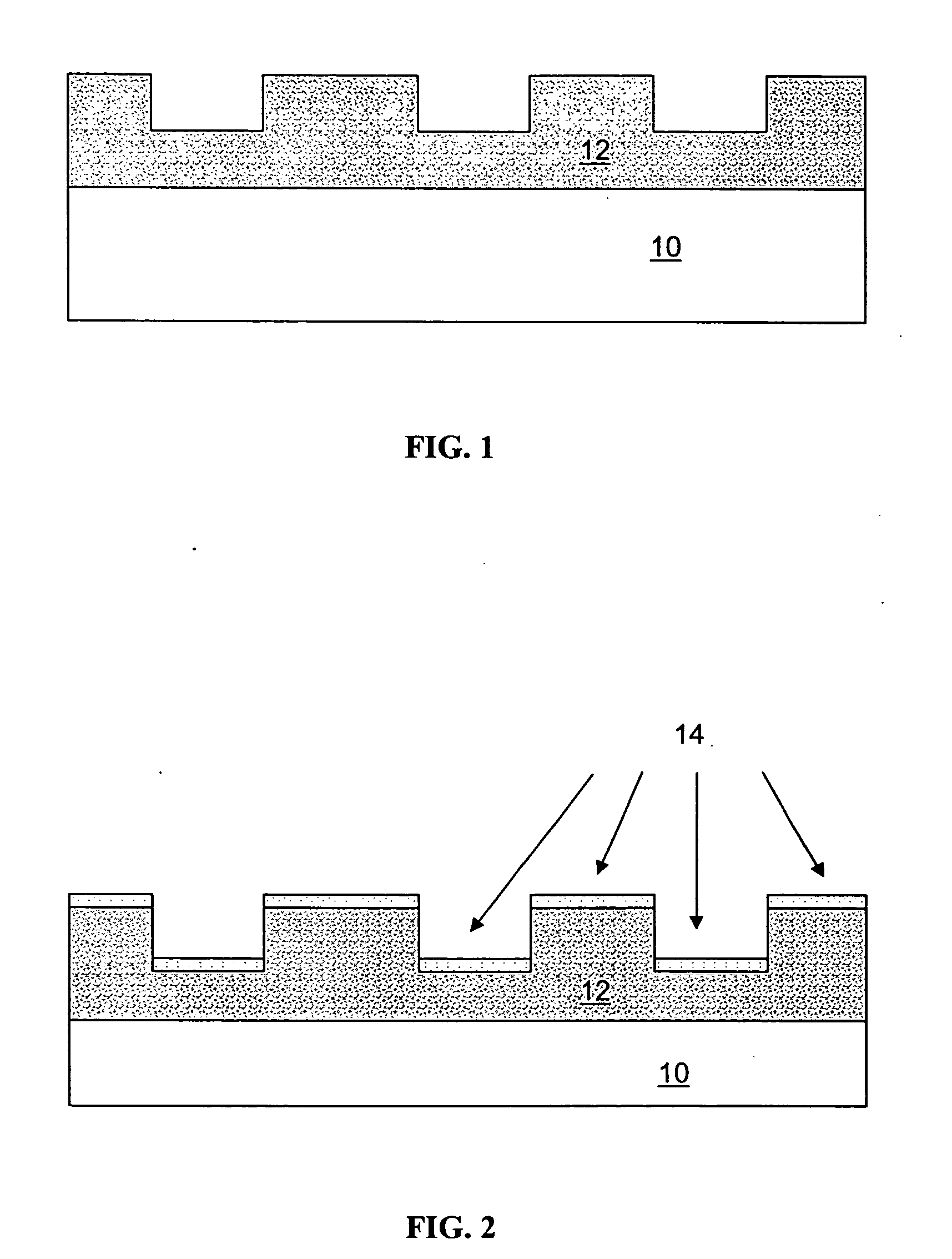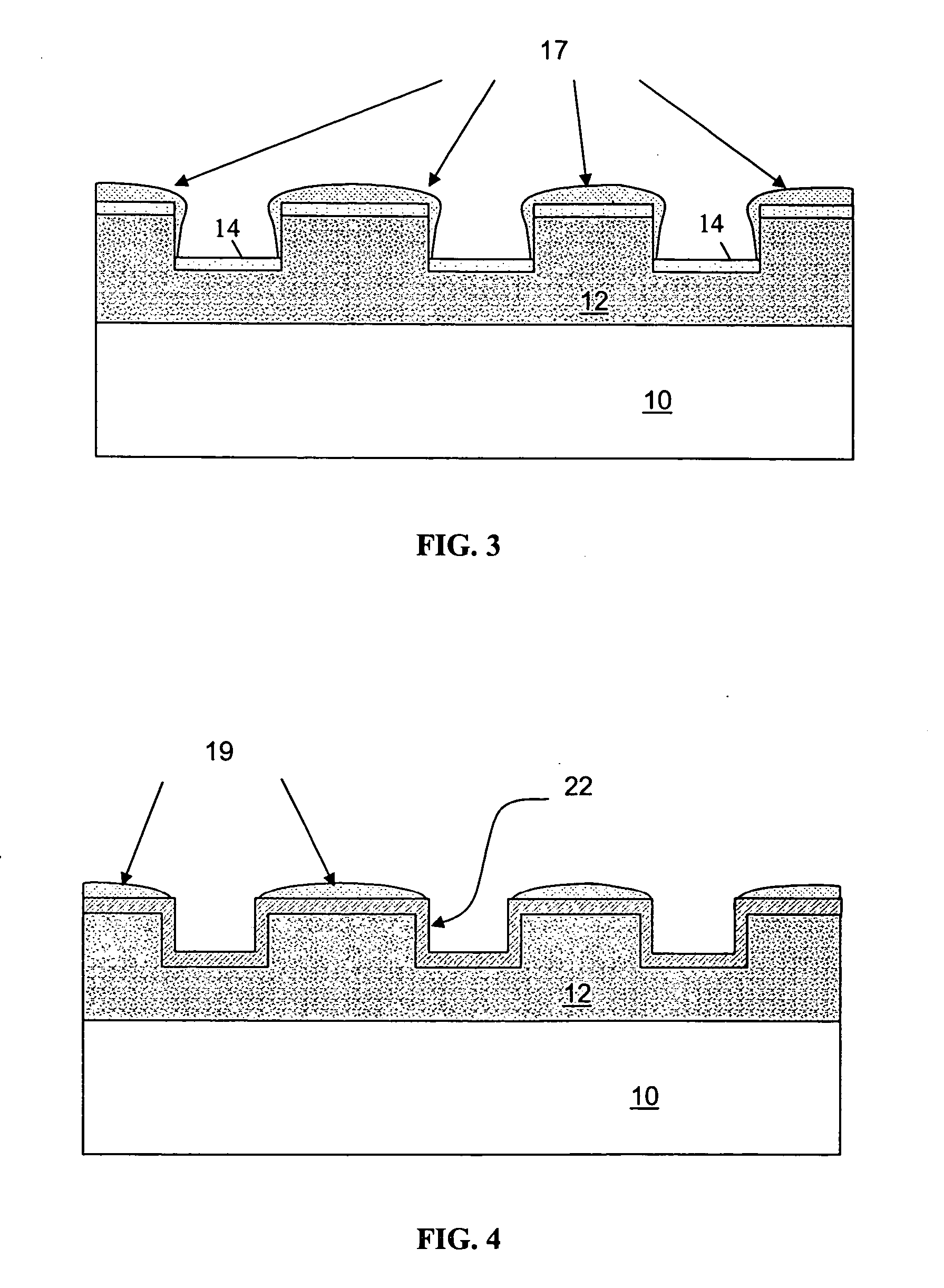Method of forming a metal silicide layer on non-planar-topography polysilicon
a polysilicon and metal silicide technology, applied in the field of metal silicide layer formation, can solve the problems of poor bottom coverage and poor sidewall coverage, and achieve the effects of reducing the stress and resistance of the silicide layer, facilitating the formation of a metal silicide layer, and rapid thermal processing
- Summary
- Abstract
- Description
- Claims
- Application Information
AI Technical Summary
Benefits of technology
Problems solved by technology
Method used
Image
Examples
second embodiment
VD, and then Biased IMP or CD
[0051] In a second embodiment, the order of the two metal depositions described in the first embodiment is changed. According to one embodiment, the order of the two metal deposition process steps is the only difference between the second illustrated embodiment and the first illustrated embodiment. Hence, in a first step in a semiconductor process, non-planar topography or featured polysilicon is formed on a substrate.
[0052] In a subsequent step in the semiconductor process, a first metal layer is formed on the substrate by an improving sidewall coverage process. FIG. 6 is a schematic diagram of a semiconductor profile depicting a step in a semiconductor process, in accordance with this second illustrated embodiment of the present invention, wherein the first metal layer 25 is deposited onto the top, the sides and slightly on the bottom of the non-planar topography polysilicon 12. The first metal layer 25 is formed, for example, by either unbiased IMP d...
PUM
| Property | Measurement | Unit |
|---|---|---|
| temperatures | aaaaa | aaaaa |
| temperatures | aaaaa | aaaaa |
| aspect ratios | aaaaa | aaaaa |
Abstract
Description
Claims
Application Information
 Login to View More
Login to View More - R&D
- Intellectual Property
- Life Sciences
- Materials
- Tech Scout
- Unparalleled Data Quality
- Higher Quality Content
- 60% Fewer Hallucinations
Browse by: Latest US Patents, China's latest patents, Technical Efficacy Thesaurus, Application Domain, Technology Topic, Popular Technical Reports.
© 2025 PatSnap. All rights reserved.Legal|Privacy policy|Modern Slavery Act Transparency Statement|Sitemap|About US| Contact US: help@patsnap.com



